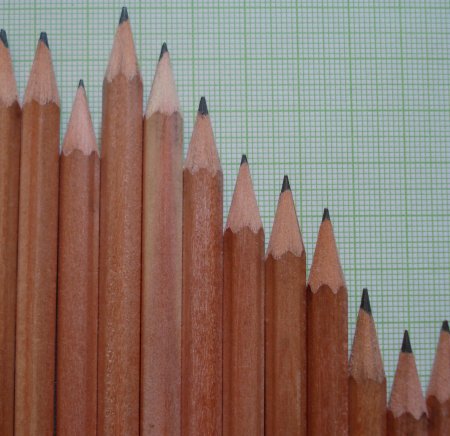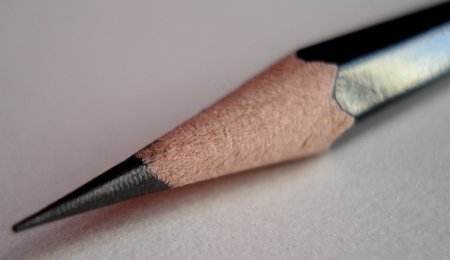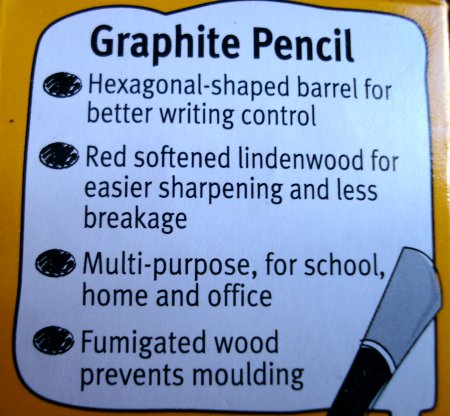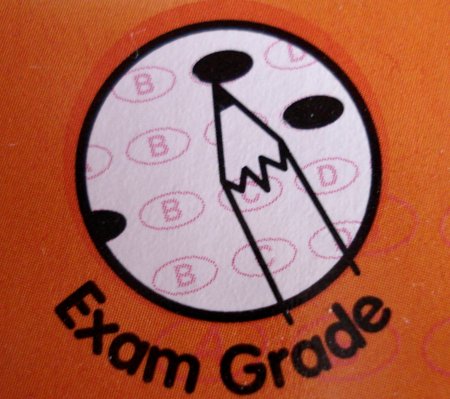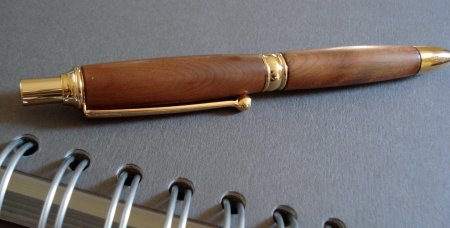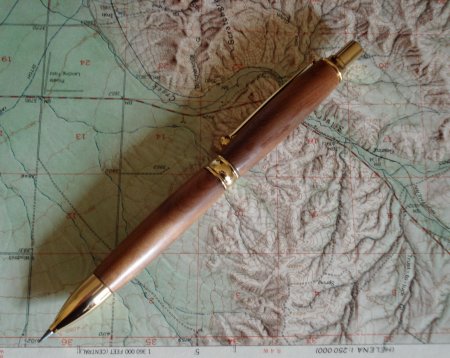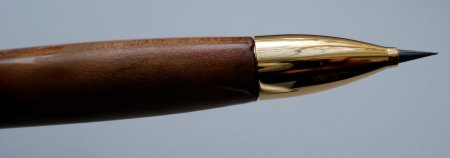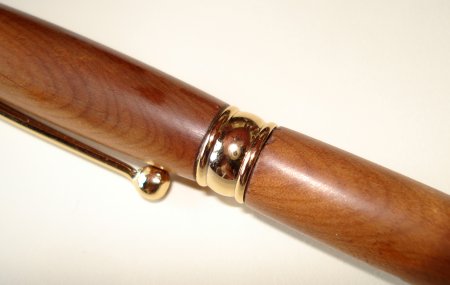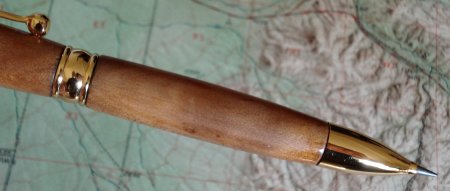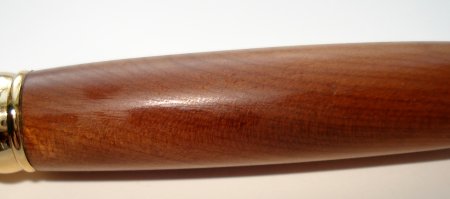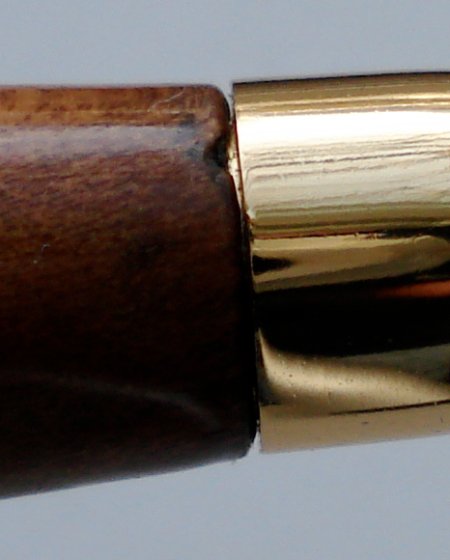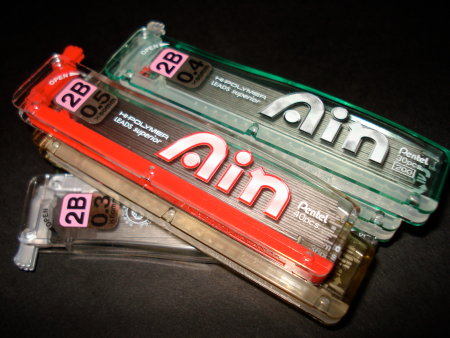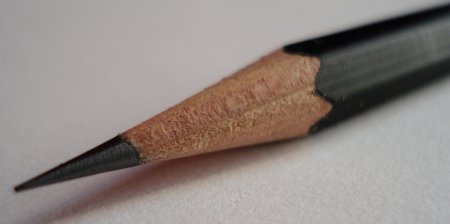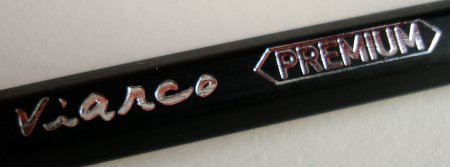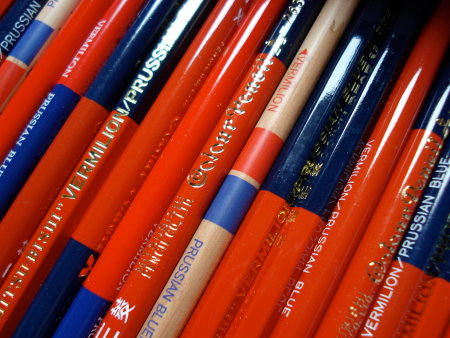
So far, we’ve seen two examples of red and blue pencils from Japan – the first rate Kita Boshi 9667, and the very unusual finger-jointed Mitsubishi 2667.
Let’s continue our exploration of this interesting pencil format by looking at the mainstream offerings from Japan’s largest pencil manufacturers, Tombow and Mitsubishi.
Tombow makes the round 8900 VP. (VP for Vermilion/Prussian Blue.) There is also a very interesting variant – the 8900 VP 7/3 – a 70% red, 30% blue pencil!
Mitsubishi counter with their own round red and blue pencils, the Colour Pencil 2667, and an accompanying 70% red, 30% blue, Colour Pencil 2637.
Mitsubishi also produce a hexagonal pencil, the 772.
The Tombow CV-REA VP, an offering corresponding to the 2667EW, is the only product missing (to the best of my knowledge) from this review.
All the pencils have their principal makings in gold, and some have additional markings in white:
8900 VP
Obverse: High Quality Tombow 8900 *V.P* Made in Indonesia
Reverse: [bar code] Vermilion Prussian Blue
8900 VP 7/3
Obverse: High Quality Tombow 8900 *V.P* 7/3 Japan
Reverse: Vermilion Prussian Blue
2667
Obverse: Mistsubishi Pencil Co. Ltd. Colour Pencil 2667
Reverse: [bar code] Vermilion/Prussian Blue
2637
Obverse: Mistsubishi Pencil Co. Ltd. Colour Pencil 2637
Reverse: Vermilion/Prussian Blue
772
Obverse: “Mitsu-Bishi” Vermilion/Prussian Blue 772
Reverse: ????
A few observations about these pencils, starting with the more subtle distinctions. Two pencils have bar codes, and three do not. I don’t know if there is any greater meaning. The various pencils may or may not be meant for individual sale, and some might be part of packaging that contains a bar code. The pencils without bar codes certainly have a cleaner appearance.
Proportion – the unequal proportion of the two colours and implied specialization of the 2637 and 8900 7/3 pencils is fascinating and charming! It is a rare and appreciated touch!

Lettering – the “C” in “Colour” on the Mitsubishi pencils is remarkable! A curl in a curl! It is a first rate traditional font.
Varnish. All five pencils seem to have nearly identical blue ends. Yet the red sides vary. The two 8900s seem the same, but the 26x7s are not. The 772 seems to be the same as the 26×7.
The 772 is nicely done in another way. The Latin vs. Kanji characters on opposite sides make a nice juxtaposition.

Made in Indonesia. Okay, I am slightly shocked. I have not previously seen a woodcase pencil from a Japanese pencil manufacturer marked “Made in Indonesia”. And adding to the curiosity is that the sibling 7/3 is marked “Japan”. Has anyone seen any pencils like this?
How do they write?
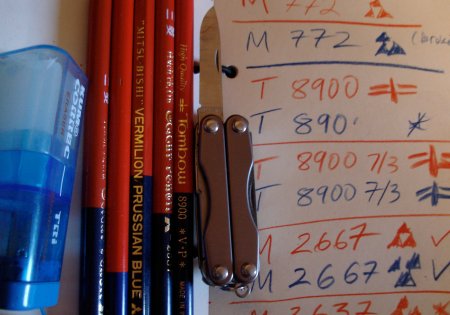
Before answering that question, let me mention that these pencils all arrived unsharpened – and some were not co-operating with the Irish and German made KUM Correc-Tri sharpener!
The blue ends were the worst – I gave up on the 772 and took out a pen knife. Guess what? The 772 was very hard to sharpen, even with a Leatherman Squirt pen knife.
On the red side, the 2667 red and 8900 blue ends needed two tries after breakage.
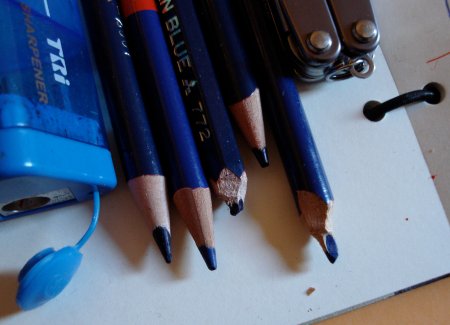
The wood quality and breakage issues of the 772 seem to mark it as a lower quality pencil than the other four.
I retried the sharpening in my battery operated Panasonic sharpener, and it did much better.
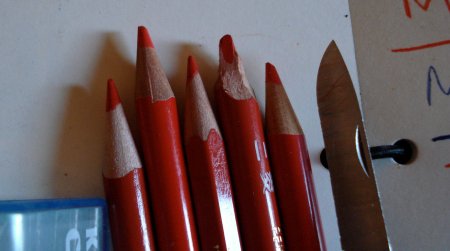
So as to how they write – all five wrote very well, with rich, higly pigmented lines. I didn’t distinguish much difference between them.
My favourite is probably the 2667, based on ease of sharpening and the distinctive makings.
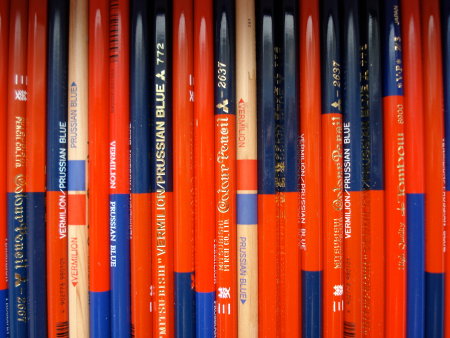
Further on red and blue pencils:
From penciltalk.org:
Red and Blue pencils
Red and Blue pencils II
Television! (The Conté Television 649 red and blue pencil)
Red and Blue pencils IV – Viarco
Red and Blue pencils V – a mechanical twist
Red and Blue pencils VI – the Kita-Boshi Vermilion and Prussian Blue 9667 pencil
FILA 795 BE Red and Blue Pencil
Chung Hwa 120 red and blue pencil
Mitsubishi 2667 EW red and blue pencil
From stdk.de:
Rot-Blau-Stifte
From rot-blau-stift.de:
Rot-Blau-Stift
From the uncomfortable chair:
?????????
